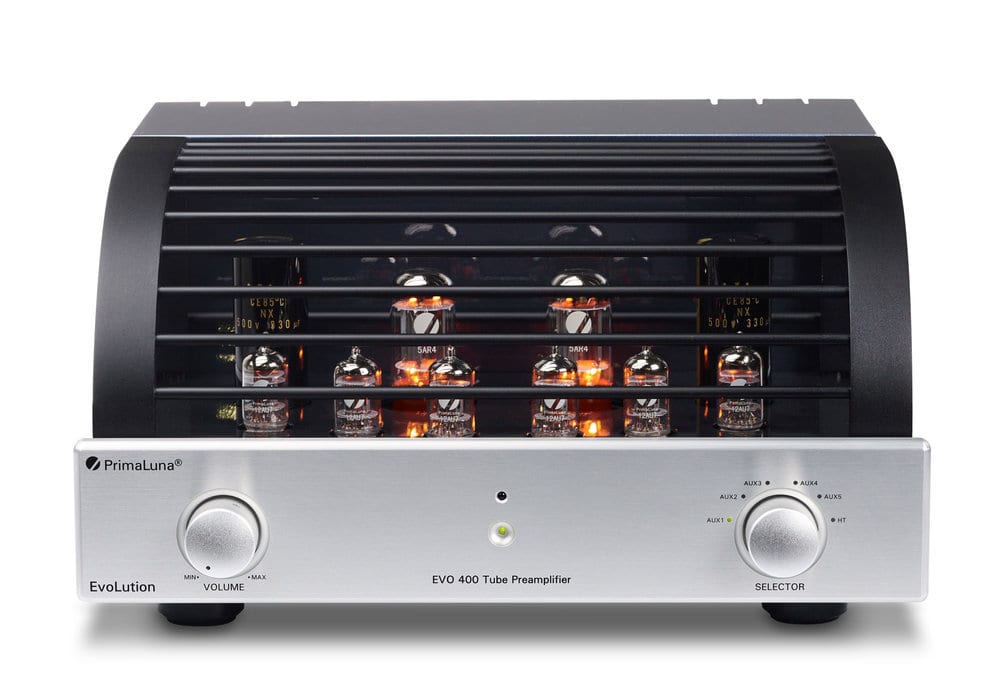
Before you choose a new preamp, you need to understand a few things:
1. Preamps are a profit center for many manufacturers. While tube amps are expensive to build, a decent tube preamp can be built and sold for $1500; at a profit. Shocked? People see a pretty faceplate and never look under the hood. But if you did look, you might be bummed out to see a lot of empty space. If it isn’t the parts inside, what exactly are you paying so much for? Manufacturers have steadily increased the price of preamps over the last 20 years at a pace that far exceeds inflation. They are also utilizing fewer parts in their designs
2. There are no new designs in preamps. Manufacturers make lofty claims about their “entry level” $5,000 preamp being “inspired by” or “trickle down” versions of their $20,000 flagship models. But are they? Not really. All you need to do is search Google for interior photos and remember these facts:
A: The best tube preamps use more tubes. If a preamp uses one or two tubes, it’s usually a hybrid. The tube is used for “amplifying” or voltage gain, and a solid-state device like an FET is used to lower output impedance and “drive” the voltage through. There is only ONE reason to use an FET. It’s cheap. FET’s cost pennies while a tube and tube-socket costs around $20. Since you are paying $5,000 for the preamp, you would think they might be nice and spend the twenty bucks. But they don’t.
B: The best tube preamps are tube rectified. Look at their flagship model and you will see a rectifier tube or tube regulation so the circuit is pure tube. Why? It’s quieter than solid state rectification, dropping the noise floor. And it offers the most natural, textured, and vibrant presentation because the circuit is now pure tube. Solid state rectification is fine choice for a $1200 preamp. That is understandable. But a $5000 preamp? That’s absurd. Using a 5AR4 rectifier tube is not cheap, but it is the Gold Standard. PrimaLuna goes even further using two 5AR4 rectifier tubes in a dual-mono design to present your music with a three-dimensionality that will give you goosebumps.
C: The best tube preamps are dual-mono. Easier said than done because to achieve a true dual-mono design means two power transformers and all the regulation circuits. In effect, dual-mono means building two discrete and separate preamps into one box. This is a rarity even at the highest price points. All PrimaLuna preamps have been dual-mono from the beginning.
D: The best tube preamps use analogue volume controls. Not volume control chips. Look inside the most well-known brand of tube preamps and you will see a chip called a DS1666-10 Digital Resistor IC. At Primaluna, we understand the temptation to use this chip as they cost $4 each (half that in quantity!). The preamp will sound fine and be quiet, but true to “chips” it will add an electronic “sheen” to the sound. PrimaLuna prefers analogue. And we use the Gold Standard in motorized potentiometers: The iconic Alps Blue Velvet. Why? Because they track perfectly, stay quiet, and don’t sound like chips!
E: If you could have it all. Everything. You would want point to point wiring in the signal path. This is a true rarity. There are a couple of companies that do it (Atma-sphere is one), but it’s almost unheard of today. You need to look at history: The iconic preamps of the 1960’s like the Marantz 7C are desirable today because of point to point wiring. Products with printed circuit boards (PCB’s) go down in value and end up forgotten at pawn shops.
F: Made in USA preamps are rarely made in USA. Contract factories overseas stuff circuit boards with parts and those circuit boards are then bolted into a box in the USA; and you are told it’s an American product.
3. Never buy a preamplifier with an internal DAC. Why? Because digital changes, and history shows that preamplifiers with “old” digital become unwanted and have almost no resale value.
4. Never buy a preamplifier with an internal phonostage. Internal phonostages are “throw in” and are rarely good quality because manufacturers assume 90% of buyers won’t use them. The external phonostage market is very competitive. You can get something much better for as little as $200, and buy one that actually meets your cartridges needs and YOUR budget.
PrimaLuna doesn’t believe in fairy dust.
We believe in superior engineering and superior parts. That is why we use Swiss-made silver-plated OFC wiring, Mundorf capacitors from Germany, and from Japan, Takman resistors, Nichicon capacitors, Fujitsu relays, and Alps volume controls. Parts well-known for their superior sound quality; quite literally, the best of the best. That’s why you don’t see other manufacturers discussing this topic as we are now. They don’t want you to look behind the faceplate.
Thank you to PrimaLuna for this great information!
